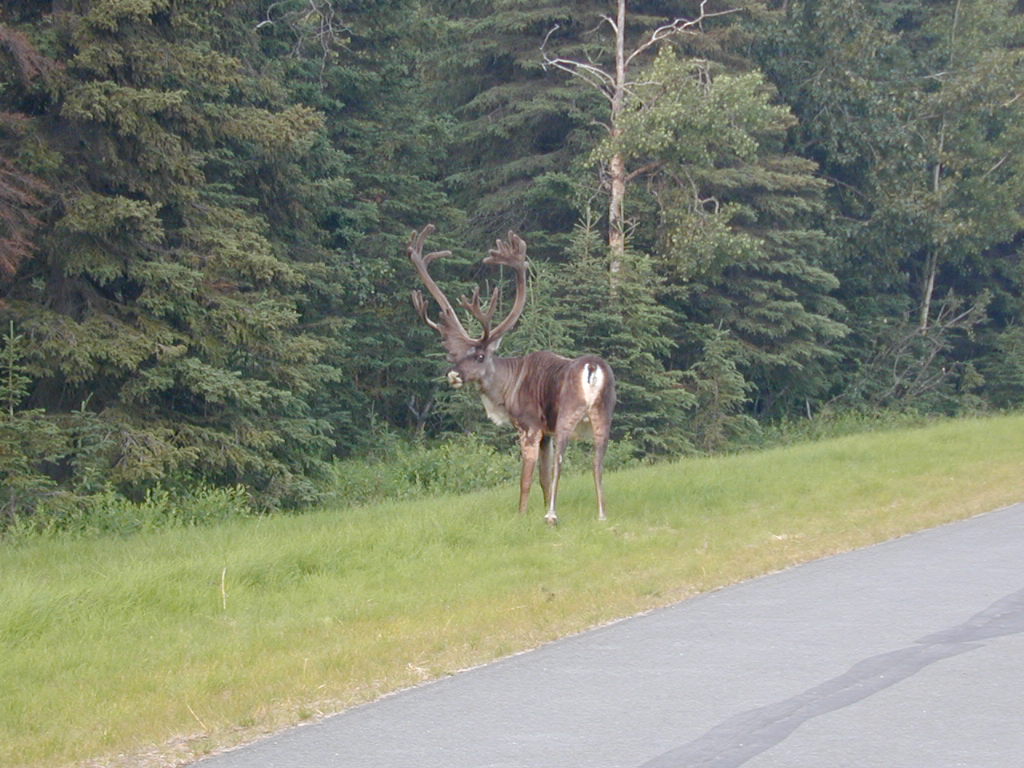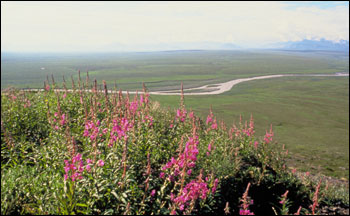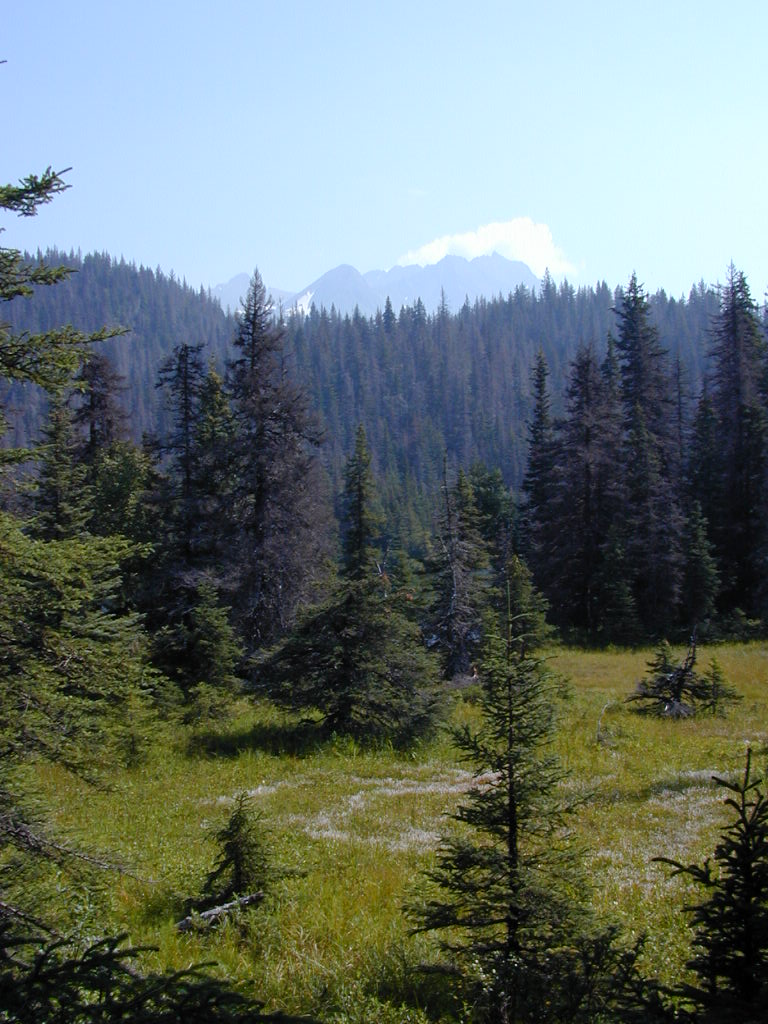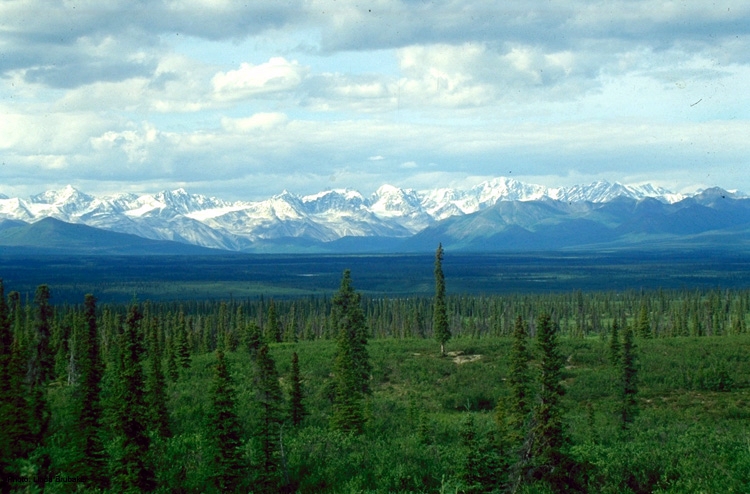Habitat
Rangifer tarandus has a wide-ranging habitat.
There is a woodland subspecies (Rangifer tarandus caribou) that be
found as south as 46 degrees north latitude, along with other subspecies (Rangifer
tarandus pearyi and Rangifer tarandus platyrhynchus) that can range
up to 80 degrees north latitude. At
one point, they occupied Germany, Great Britain, Poland, and Maine, but now are
rarely found in these areas due to overhunting and destruction of the land.17

© Brent Huffman, www.ultimateungulate.com
Arctic tundra is composed of a treeless plain that forms
the transition between the taiga (boreal forest) and the ice caps.
It is characterized by a layer of permafrost, or permanently frozen
ground under the surface of the soil.
This harsh environment allows for the growth of small, stunted trees and
shrubs, as well as tough plants that grow in tufts along the frozen ground
called lichens, which are a main source of
nutrition for reindeer. The arctic
still contains winter and summer seasons, with the sun
C. As can be imagined, this leads to the necessity of thick
fur coats to keep warm the organisms that occupy this
biome. Precipitation
levels consist
mainly of 6-10 inches of snow per year.
The permafrost creates a lot of standing water however, that melts to
create small bogs and ponds each summer.
The tundra contains little biodiversity, with only 1700 species of plants
and 48 land mammals, including snowy owls,
lemmings,
musk oxen, and
Arctic
fox.  being present 24 hours a
day in the summer. The normal
temperature of the tundra is around -28 degrees C with extremes
down to -70
degrees
being present 24 hours a
day in the summer. The normal
temperature of the tundra is around -28 degrees C with extremes
down to -70
degrees
The boreal forest biome (or
taiga, meaning swampy moist forest) where reindeer also roam, is found in a belt stretching
across North America and Eurasia, and mostly includes Canada and Russia.
It is made up of coniferous trees including spruces, firs, and pines, and
also tamarack, but also of deciduous alder, aspen, and birch.
The coniferous trees are able to survive the cold, harsh winters that
bring about drought and a short growing season.
Most of
 this biome used to be covered in glaciers, and today, like the
Arctic tundra, also contains a layer of permafrost under the soil.
The climate is composed of long, cold winters with up to 6 months being
below freezing temperatures. Summers
are short, but with wide-ranging temperatures from cold to extremely hot.
Each year, 15-20 inches of rain fall, but the climate is humid due to low
evaporation.14
this biome used to be covered in glaciers, and today, like the
Arctic tundra, also contains a layer of permafrost under the soil.
The climate is composed of long, cold winters with up to 6 months being
below freezing temperatures. Summers
are short, but with wide-ranging temperatures from cold to extremely hot.
Each year, 15-20 inches of rain fall, but the climate is humid due to low
evaporation.14
Other mammals besides reindeer that can occupy
the boreal forest biome include ducks, loons, cranes, bison, elk,
wolves,
grizzly and black bear, and beaver.
Along with shrubs and mosses, the boreal forest is a plentiful supply of yellow,
green, and light gray
lichens that stay intact
all year long, proving once again to be an important food
source for reindeer.
Unfortunately, boreal forest is disappearing due to clearance of forests
for farmland, mining, or are flooded to
make room for hydroelectric generating stations.
This destruction of the land is also destroying wildlife and
greatly reducing the amount of carbon that can be held in the
environment.3
Check out how reindeer adapt to their environment next!

